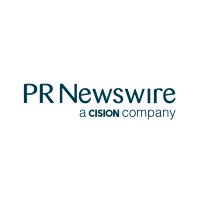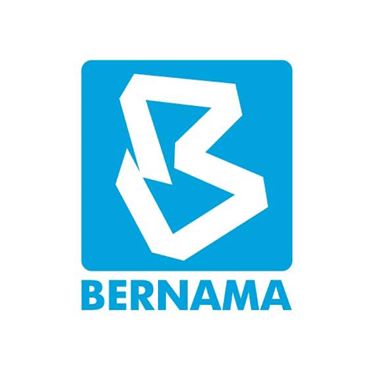The Future of Work: How Employers Are Responding to Workforce Megatrends
1 hour ago
New research examines business practices and benefit offerings amid the evolving environment
LOS ANGELES, April 29, 2025 /PRNewswire/ -- Seven in 10 employers (72%) either currently use or plan to use robotics or artificial intelligence (AI) to augment their human workforce and 43% believe their employees are worried that their job skills will no longer be needed, according to New Frontiers: Employers and the Evolving Workforce, a new report by nonprofit Transamerica Institute® and its Transamerica Center for Retirement Studies® (TCRS).
"Employers are navigating a dynamic environment filled with both opportunities and challenges. The confluence of megatrends, such as the use of AI, population aging, and labor shortages, are reshaping the future of work," said Catherine Collinson, CEO and president of Transamerica Institute and TCRS. "How are employers addressing these new realities? What does it mean for workers?"
The report provides an in-depth view of employers' business concerns, workforce management priorities, business practices, and health, welfare, and retirement benefit offerings. The report also outlines recommendations for employers and policymakers.
Advanced technologies are transforming jobs
"AI, robotics, and other advanced technologies can boost productivity and revolutionize business models. But these technologies can only be as effective as employers' commitment to upskill and evolve their workforce accordingly," said Collinson.
Among employers that are currently using or expecting to use AI or robotics in the future, nine in 10 (92%) cite one or more implications for their workforce such as the transformation of certain jobs (68%), creation of new jobs (53%), and elimination of certain jobs (35%).
"Employers' visions for integrating these technologies have not fully translated into action plans for their workforce. But the message for workers is clear: Do your best to keep pace with changes that could affect your employability and identify alternative pathways, if needed," said Collinson. While 85% of employers feel responsible for helping their employees keep their job skills up to date, fewer than half (44%) cite talent development as a top workforce management priority.
Population aging and the multigenerational workforce are necessitating age-friendliness
"The U.S. population is rapidly aging and so is its workforce. Amid current labor shortages, employers may be overlooking an opportunity to expand their talent pool to include older workers," said Collinson. Almost one in four workers are now age 55 and older and, from 2023 to 2033, workers age 65 and older are projected to be the fastest growing segment of the workforce.[1] Yet, among employers with available job openings last year, only 26% gave "a great deal" of consideration to age 50-plus applicants.
"We currently have four to five generations in the workforce, and they bring a powerhouse of diversity in skills, expertise, and perspectives," said Collinson. "To tap into this opportunity and attract and retain employees, employers must recognize the needs of workers of all ages and life phases."
Best practices for becoming an age-friendly employer include:
The opportunity to enhance benefit offerings amid the intense competition for talent
"In today's marketplace, employers are facing intense competition for the best talent. A strong compensation package that includes a robust benefit offering can be a big differentiator," said Collinson. Half of employers (53%) cite compensation and innovative benefit offerings as a top workforce management priority, 46% employee recruitment and retention, and 44% talent development.
Many employers offer employee benefits, but they could offer even more. Health insurance (65%) is the most commonly offered benefit, followed by a 401(k) or similar plan (60%), life insurance (43%), student loan benefits (41%), a workplace wellness program (34%), an employee assistance program (33%), and a financial wellness program (32%).
Employers should specifically consider enhancing their retirement benefits. The SECURE 2.0 Act of 2022 makes it easier and more affordable for employers not offering retirement benefits to adopt a plan. It also has a myriad of provisions for current 401(k) plan sponsors to enhance their plans and help workers build their savings. Only 27% of 401(k) plan sponsors are very familiar with the law, while just 2% of employers not offering retirement benefits are very familiar with it.
"Employers are main drivers of our economy and societal values. They enhance the lives of workers by offering employment, work experience, training and development, and valuable benefits to help them build wealth and achieve a financially secure retirement. At the same time, workers are an essential resource needed by employers to survive and thrive," said Collinson. "Without doubt, in today's dynamic environment, the workforce is evolving and both employers and workers must adapt accordingly. The future of work depends on everyone's contributions."
New Frontiers: Employers and the Evolving Workforce is based on a survey of more than 1,800 for-profit U.S. employers conducted in late 2024, and it features comparisons with a survey of more than 5,400 workers of for-profit companies. The report provides analysis by small, medium, and large companies and contextual comparisons with Transamerica Institute's most recent survey of workers. To download the report and other research, visit www.transamericainstitute.org. Follow on LinkedIn, Facebook, and X.
About Transamerica Institute
Transamerica Institute® is a nonprofit, private operating foundation dedicated to identifying, researching, and educating the public about retirement security and the intersections of health and financial well-being. Transamerica Center for Retirement Studies® (TCRS), a division of Transamerica Institute, conducts one of the largest and longest-running annual retirement surveys of its kind. The information provided here is for educational purposes only and should not be construed as insurance, securities, ERISA, tax, investment, legal, medical, or financial advice or guidance. Please consult independent professionals for answers to your specific questions. www.transamericainstitute.org
About the Survey
The analysis contained in New Frontiers: Employers and the Evolving Workforce was prepared internally by the research team at Transamerica Institute. An 18-minute online survey was conducted within the U.S. by The Harris Poll on behalf of Transamerica Institute and TCRS between September 17 and October 4, 2024, among a nationally representative sample of 1,893 employed adults age 18+ who are decision makers for employee benefits at their for-profit company and employ one or more employees across all locations ("employers"). Data was weighted where necessary by the number of employees, revenue, industry, and state to align them with actual proportions in the population. Respondents were selected from those who agreed to participate in Harris surveys. The sampling precision of Harris online polls is measured using a Bayesian credible interval, and the employer sample data is accurate within ±3.4 percentage points using a 95% confidence level. This credible interval will be wider among subsets of the surveyed population of interest. Percentages are rounded to the nearest whole percent.
1 Source: United States Bureau of Labor Statistics, Employment Projections, Civilian Labor Force by Age, Sex, Race, and Ethnicity, https://www.bls.gov/emp/tables/civilian-labor-force-summary.htm
Media Contact: Kyle Moschen[email protected]
SOURCE Transamerica Center for Retirement Studies
...Read the fullstory
It's better on the More. News app
✅ It’s fast
✅ It’s easy to use
✅ It’s free









